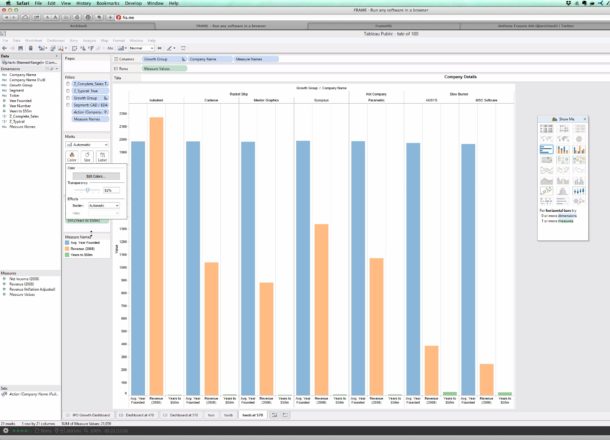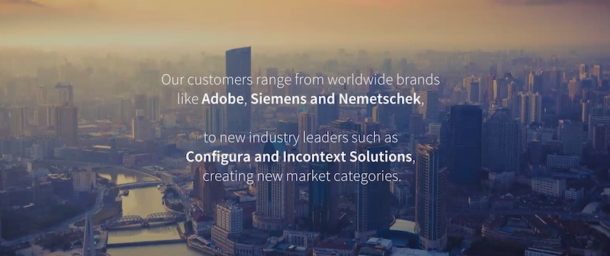Frame today announced $10 million in funding from notable venture capital firms, including Boston’s Bain Capital Ventures, the venture arm of Bain Capital, the firm behind such technology notables as LinkedIn, Vonage and SurveyMonkey.
Architosh has been in contact with Dr. Nikola Bozinovic, CEO and founder of Frame, for months, discussing various implications of his cloud platform technology. An in-depth feature interview with Dr. Bozinovic will be published on Architosh later this week. [stay tuned for that!]
If Windows Apps Can be Delivered Everywhere, Why Code for Mac?
Frame delivers Windows apps through the cloud via either a Frame Personal, Frame Business or some form of an account associated with an ISV (independent software vendor) using Frame Platform. The technology is stunning in its simplicity, flexibility and cost-to-benefit ratio. Frame enables you to have a cloud computer–a super powerful one at that–with your chosen apps and data sitting side-by-side…in the cloud. You data (files) are accessed through associated cloud storage providers like Dropbox and Google Drive.
With latency down to a mere 20 – 25 milliseconds, your modern web browser is turned into a type of terminal application connecting you to your apps and data running on powerful Windows servers inside leading data centers such as Amazon, Microsoft Azure and similar. You can begin a Frame session at the office (say on a Windows laptop) and then pickup that work session later at home on an iMac, and then the next day at a client site on a Chromebook.
While this offers a stunning new way to access Windows apps on the Mac platform, particularly graphics intensive apps like DCC and CAD, a looming question emerges: if users take to this well, why should developers continue to develop specifically for Mac OS X?
Adobe, Siemens, and Nemetschek—Early Customers
Indeed, some major software developers have already explored Frame’s technology and its Frame Platform for software providers. Just because Adobe, Siemens and Nemetschek are listed as customers (see image above) doesn’t mean these companies have specific plans to launch Frame-based solutions and offerings. They may be exploring Frame as a cloud technology and comparing it to rival offerings or in-house tech.
On the other hand, Architosh has already discovered that Adobe was testing Photoshop via Frame’s technology. We actually explored the functionality of Photoshop being driven through our Chrome browser on a Mac via Frame. Bear in mind that everyone knows Adobe and Apple are close and that Photoshop is native on the Mac. So why offer it via the browser?
There are several scenarios that justify it that have nothing to do with eliminating Mac development. With Frame you can establish concurrent work sessions, sharing your Frame session with up to 16 people. In that session nothing is needed (zero download). You can even share the mouse and keyboard. This “team working” feature is quite useful. Another reason is that apps can tap much more power in data centers than is available in personal computers and even company workstations. And the Internet speeds Frame can deliver are up to 200x faster (upload) than a typical broadband connection.
The Effect on Mac Development
In the upcoming interview on Architosh later this week, I asked Dr. Bozinovic does this maybe mean the end of native Mac development for some developers? He replied:

02 – Frame hosts some sample Windows test apps in Frame for users to explore, shown here is data analytics application Tableau, which, happens to now be on Mac native now.
“It’s a very interesting point and a valid question. We see Frame as a very broad but still very horizontal platform and that decision is still going to be on a software developer.” He added: “It is pretty clear that this is a much easier way to deliver apps to Mac users, but do the [Mac] users want Mac apps this way?”
That may be the 64,000 dollar question as Frame moves forward with the positive momentum it currently has behind it. We wonder out-loud what Adobe and Nemetschek may have in store. We already know that Siemens’ Solid Edge MCAD product has been in a type of trial via the cloud for several months. While all the major MCAD companies have recently discussed ongoing development strategies with respect to the cloud, and with respect to reaching more platforms and devices, Frame’s technology gives end-users a direct optional approach they can control themselves.
[Edited: 8:53pm EDT]




Reader Comments
http://t.co/LV5rj2yQk3 — “…the decision is still going to be on a software developer.” Dr. Nikola Bozinovic, CEO http://t.co/LdLDykzDWP
http://t.co/LV5rj2yQk3 — “…the decision is still going to be on a software developer.” Dr. Nikola Bozinovic, CEO http://t.co/LdLDykzDWP
[…] MORE: Frame’s new cloud based ‘Frame Platform’ may shake-up the Mac app market […]
Comments are closed.